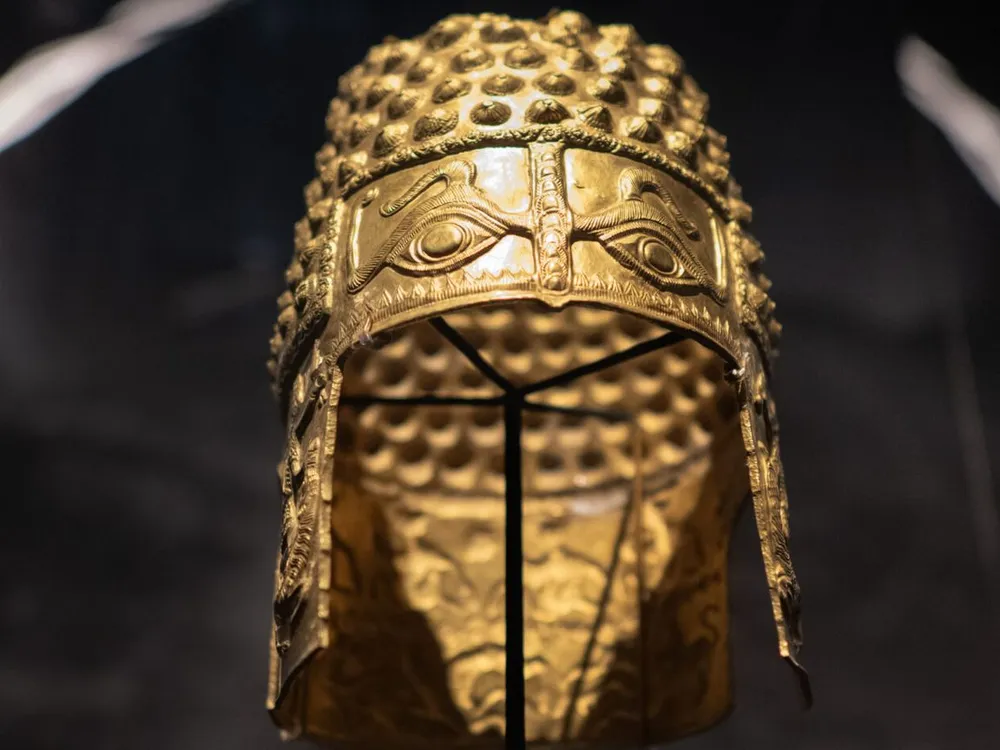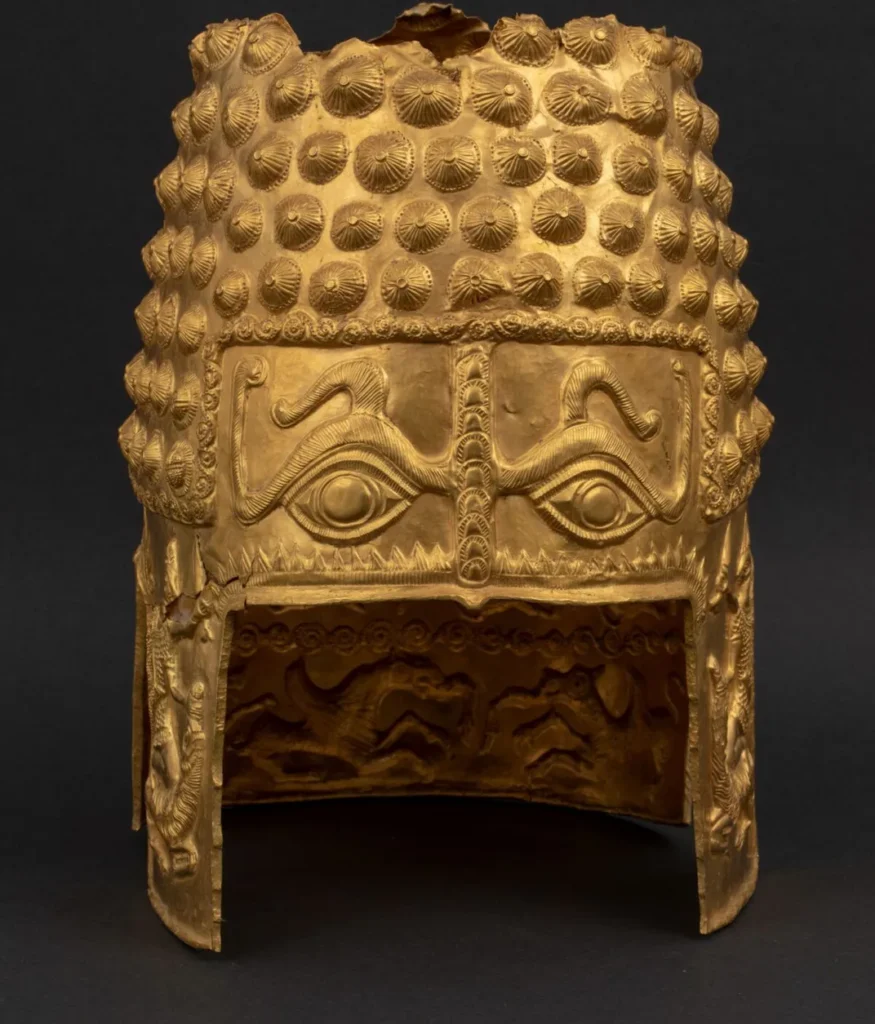Looking for a muse? Check no further. Discover the Best of Art, Culture, History & Beyond!

In a brazen and highly orchestrated art heist, thieves blew up the doors of a Dutch museum and made off with one of Romania’s most treasured artifacts—the 2,500-year-old solid gold Helmet of Coțofenești. This theft has sent shockwaves through the international art and archaeology communities, as experts fear the artifact could vanish into the murky depths of the black market.
A Bold and Destructive Break-In
The heist unfolded in the early hours of the morning 25 January, 2025, at the Drents Museum (Netherlands), where the ancient helmet was part of a special exhibition on Dacian gold treasures. Security footage shows a group of masked individuals storming the museum, using explosives to breach the reinforced doors before swiftly grabbing the artifact and disappearing into the night. The entire operation took just a few minutes, leaving behind shattered glass, a gaping hole in the museum’s entrance, and a deep sense of loss among historians and curators.
Authorities believe the thieves had inside knowledge of the museum’s security systems and may have had prior access to the building’s layout. Given the high-profile nature of the stolen artifact, it is suspected that this was a targeted theft for a private collector rather than an opportunistic crime.
The Helmet of Coțofenești: A Masterpiece of Dacian Craftsmanship
The stolen treasure, the Helmet of Coțofenești, is an exceptional example of ancient Thracian-Dacian metalwork, dating back to the 5th century BCE. Crafted from nearly pure gold and weighing around 800 grams, the helmet is a ceremonial piece rather than battle gear, likely worn by a Dacian noble or king during important rituals.
The most striking feature of the helmet is the pair of large, staring eyes on the forehead, which experts believe had an apotropaic function, meaning they were designed to ward off evil or intimidate enemies. The helmet’s surface is further adorned with intricate engravings of animals, mythological figures, and detailed repoussé (hammered) decorations, showcasing the extraordinary skill of Dacian goldsmiths.

Historians argue that the helmet represents not just a piece of armor, but a symbol of power, divine protection, and aristocratic status. The Dacians, known for their fierce warrior culture, placed significant spiritual importance on their weaponry and regalia, believing they connected the wearer to ancestral deities and heroic figures.
A Priceless Loss for Romania and Global Heritage
The theft of the Helmet of Coțofenești is not just a loss for Romania—it is a devastating blow to global heritage. This helmet is one of the few remaining examples of Dacian elite craftsmanship, providing scholars with rare insights into the art, warfare, and spiritual beliefs of an ancient civilization that once thrived in Southeastern Europe.
In recent years, art theft has become a growing problem, with many stolen artifacts ending up in private collections or illicit antiquities markets. The fear now is that this helmet, an irreplaceable piece of history, may disappear into a hidden collection, never to be seen again by the public or researchers.
A Race Against Time to Recover the Stolen Artifact
Interpol and local law enforcement have launched a high-priority international investigation to track down the stolen treasure. Authorities are working closely with black-market art crime units, auction houses, and private collectors to ensure that the artifact does not get smuggled out of Europe.
On January 29th, three arrests were made in North Holland. The police have also released 3 photos of a fourth man who is being sought as part of the investigation. View these via the link below.
Go to the official 👉 police website
As Romania and the global archaeological community hold their breath, one thing remains clear: this priceless helmet is more than just gold—it’s a link to an ancient civilization, a testament to human artistry, and a cultural treasure that must be preserved at all costs. The race is now on to recover this legendary artifact before it is lost to history forever.

This article is published on ArtAddict Galleria, where we explore the intersections of art, history, and culture. Stay tuned for more insights and discoveries!



